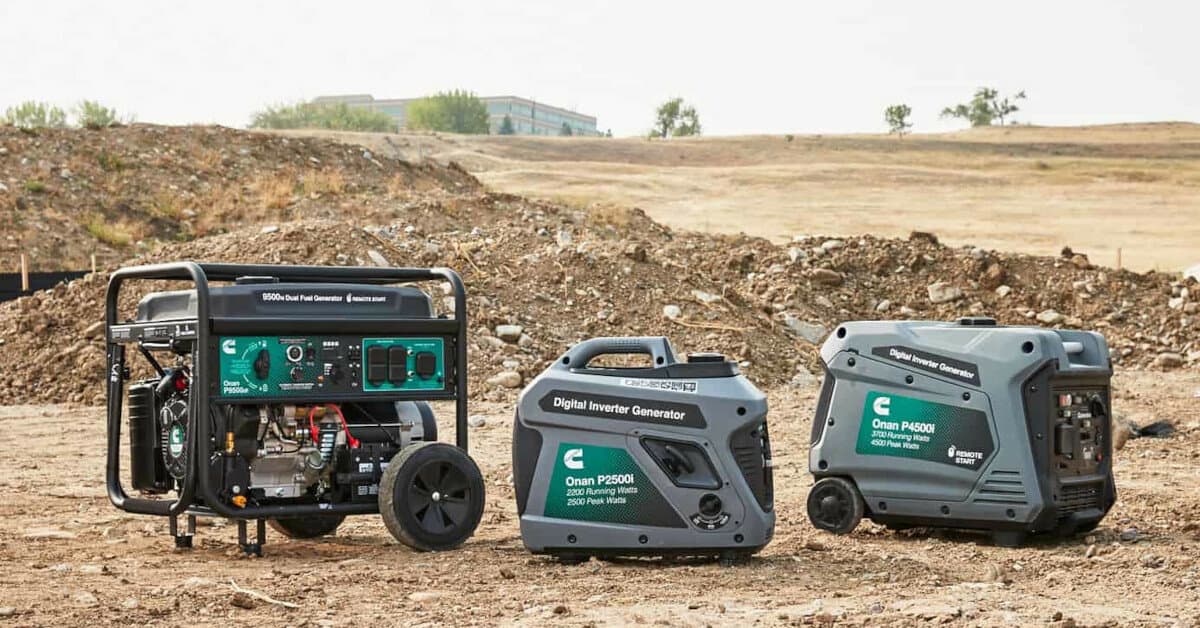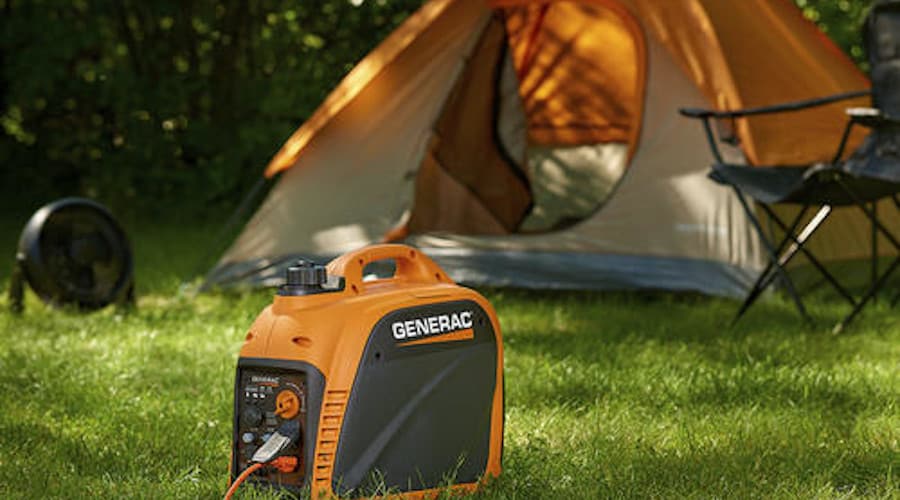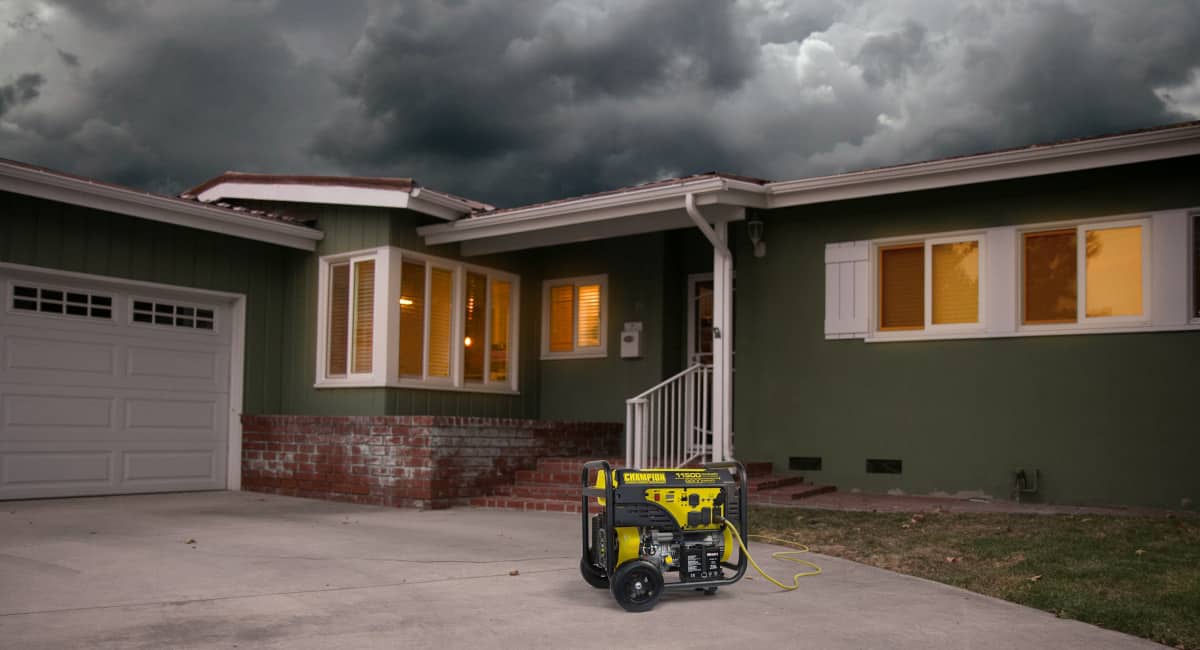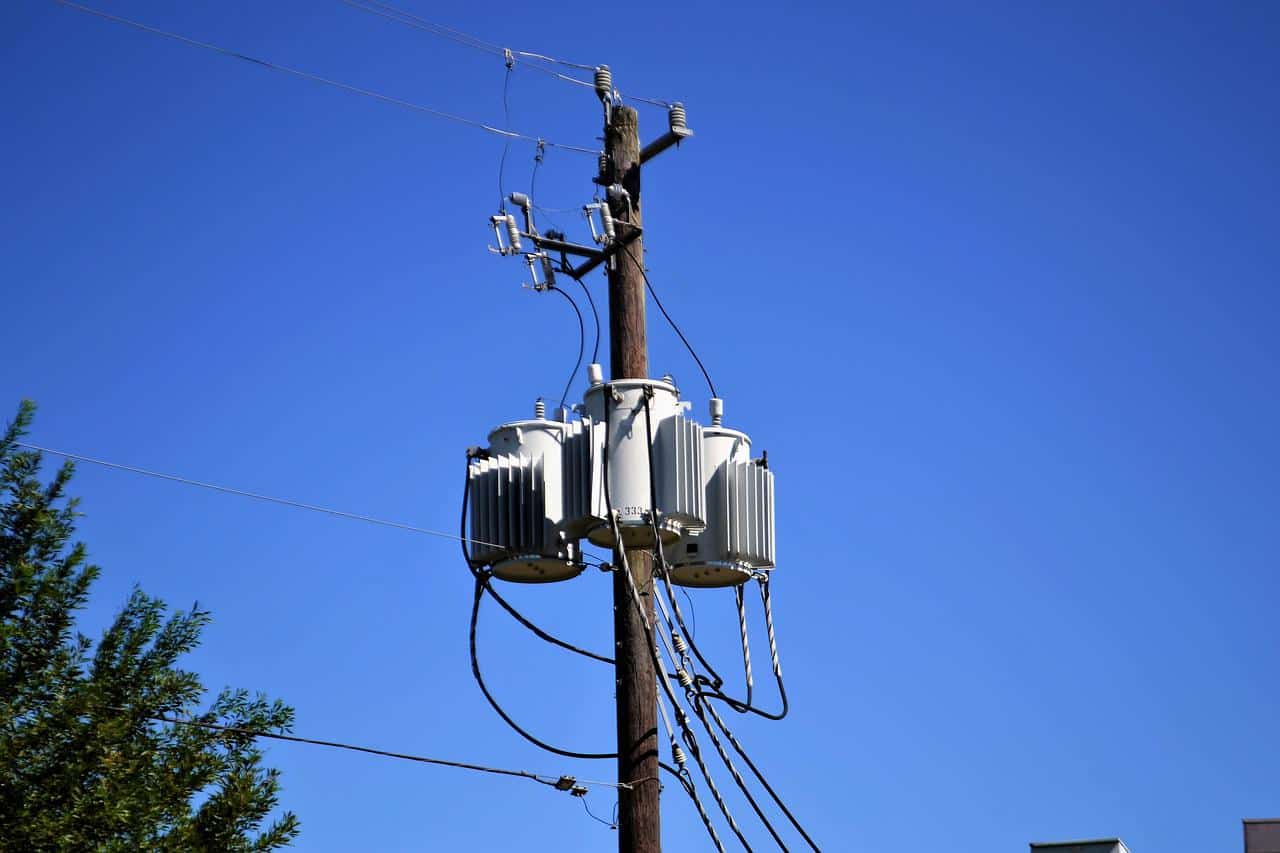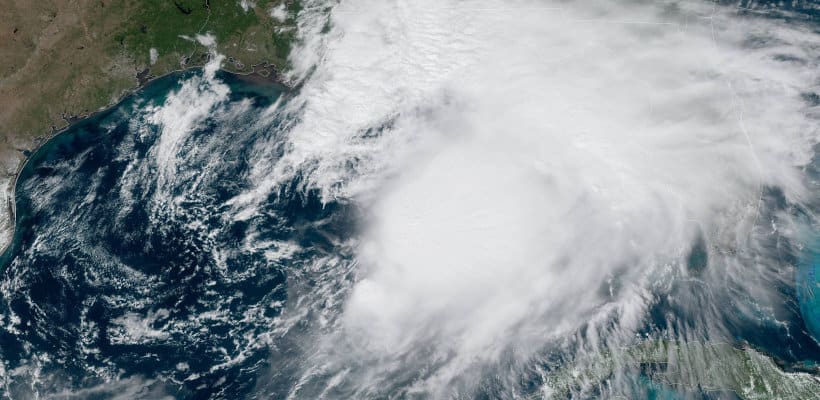Cummins Portable Generators. From left: P9500 Dual Fuel, P2500i Inverter, and P4500i Inverter. Inverter Generators have excellent fuel economy, low noise, and exceptionally clean power.
Power Wherever You Need It
Portable generators supply electrical power wherever it is needed. Construction sites use them to power electric tools and temporary lighting. Quiet generators in campsites power small appliances and festive lights. Homeowners use them for outdoor equipment or backup power during an outage. RV owners power their home away from home.
Small Small Portable Generators capable of 1200 to 3500 watts are popular for camping and outdoor fun. At the other end of the spectrum are models like the Westinghouse WGen20000c, rated for 20 kilowatts of continuous power and up to a 28 kilowatt surge—suitable for large job sites or keeping the entire house running during a power outage.
You can find portables running at local functions, sporting events, picnics, outdoor clubs, emergency power, on the job, or recreation.
Small, quiet portable Portable Inverter Generators allow single-handed carrying from location to another. They weigh as little as 30 pounds and run for up to 10 hours on a single tank of gasoline. They are built mainly for consumer use with the largest producing up to 7600 watts of continuous power.
Some have USB ports for charging your electronics.
Larger gas, propane, and dual fuel portable generators on an open frame with wheels move similar to a wheelbarrow. They can weigh hundreds of pounds, but are balanced on the wheels to allow one person to easily move them. Larger, heavier models may have four wheels. Rated continuous watts from about 1800 to 20,000 Watts and include both consumer and commercial models.
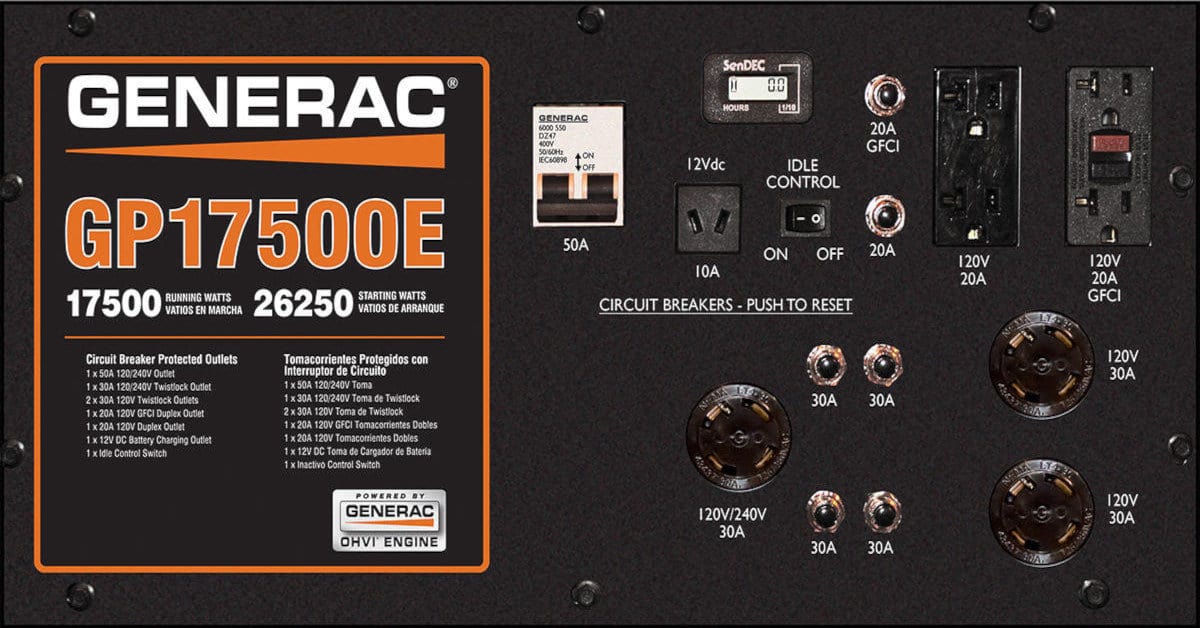
Power Outlets
Portable generators can supply power as 12 volts DC, 120 volts AC, or 240 volts AC, but not all models are capable of supplying all three, and some only provide 120 volts AC.
Duplex (double) outlets are common on portable generators and each one supplies 120 volts. Ground fault protected outlets (GFCI) are a feature on some models and protect the user from electric shocks.
120/240 volt outlets provide a way to connect the generator to a circuit breaker panel with a connection to two, 120-volt terminals, a neutral terminal, and a ground wire. To obtain the full 240 volts, both 120 volt terminals are used. This is exactly how the main service panel in a home works, making it possible to power the house during an outage through a generator manual transfer switch.
Some models have a 12-volt outlet suitable for charging a battery or operating a 12-volt appliance.
Circuit Breakers
National Electrical Code requires all electrical outlets to have circuit breaker protection rated at or below the maximum current-carrying capacity of the outlet and outlet wiring. Each outlet or duplex outlet on a generator will have a circuit breaker associated with it. Some smaller generators have just one breaker that covers one or two outlets.
Portable Generator Sizing: What Size Portable Do I Need?
Main circuit breakers protect the generator against overload. They will handle a momentary surge that exceeds the breaker rating, but if the high current continues, the breaker trips and all the outlets stop working. On generators with only one or two outlets, the main circuit breaker sometimes acts as the outlet breaker.
For example, if the outlet rating is 1800 watts, the 15-amp main breaker protects the outlet and the generator at the same time.
Electrical Ground
An important safety feature is the portable generator’s electrical ground. It provides a path for electrical current to follow back to the source in the event of a short circuit. A grounded appliance routes power through the easiest path for electricity to follow. If a short circuit occurs, electricity follows the ground instead of passing through a person.
Often, the neutral on a portable generator is bonded (connected) to the frame and to the outlet ground terminals. Current can then flow back to the generator in case of a short. Read your owner’s manual to understand how your ground is connected and if your generator requires removal of the bond to connect it to your home.
Portable generators offer a great source of power for many uses. Advances in technology have increased efficiency, portability, and power output, and made them available at a cost affordable to many consumers in sizes to fit a myriad of needs.
Weather Protection
Portable generators do a lot and work through tough conditions on Camping trips or RVing in remote locations, powering tools and machines on job sites, stage equipment at outdoor concerts and community events, and they often fill in at home for emergency power during an outage.
Check the owner manual for any portable and you’ll find one environmental condition that portable generators can’t handle alone. Rain, snow, and sleet should never enter the electrical components on a portable generator. Water in any form can damage the alternator and other electrical parts on a portable. To operate, these durable machines need protection from wet weather.
The GenTent Wet-Weather Safety Canopy provides a weather barrier for portable generators that must operate in wet-weather conditions. GenTent’s unique open frame clamps to the generator at all four corners. The durable vinyl fabric cover keeps the rain, ice, and snow off the alternator, engine, electrical panel, and extension/generator cord connections without interfering with the exhaust, but maintaining access to the fuel tank and the oil fill tube. No tools are required for installation and setup is a simple, three-step process.
Updated 02/28/2024

